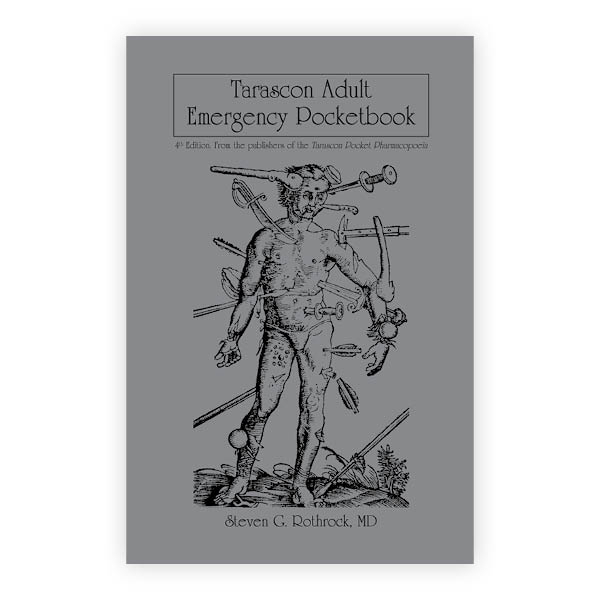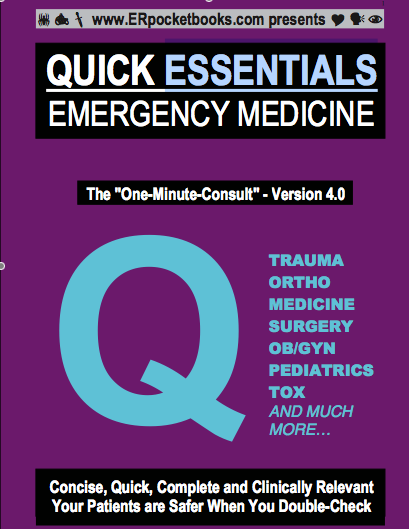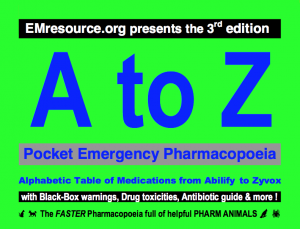- Stay fit: Stay active and eat a healthy diet.
- Science can’t cure everything: Incorporate other arts
- Plan ahead: Keeps you sharp and successful
- Be inspired: to stay motivated, seek inspiration.
- Take the stairs: This can keep you in shape
- Worry less: Life is unpredictable; stop worrying
- Share knowledge: teach or lecture
- Don’t be money crazy: it won’t get you anywhere.
- Find a role model: ask “What would they do?”
- Don’t retire: Work as long as you can.
Type-D patients & Sign-Outs
We all know about personality types like “Type A”, but there are also patient types, especially when it comes to effective communication during shift changes and sign-outs. We all understand the challenges of sign-out, and no one likes to get stuck with a patient who is difficult to discharge or has a hundred questions, especially when the patient was not even your patient to begin with.
My favorite thing to hear after I finish providing verbal aftercare along with a treatment plan and return precautions to a patient and asking them, “Are you comfortable with the plan I just laid out and do you have any questions?” is the patient asking me “Yes – who can take out this IV and when can I leave?”.
My least favorite things to hear might include: “Something is causing this and I’m not leaving until you figure it out!” or “I want to talk to your supervisor.”
In the interest of good communication with your colleagues and to make taking over sign-outs a little more predictable I would like to categorize the two types of patients above as TYPE-E for “Easy” and TYPE-D for “Difficult“. It is helpful to know ahead of time when you are walking in to discharge a patient who just had a negative million dollar work up if they are a TYPE-D patient. “Forewarned is forearmed” I think the expression goes.
- TYPE-D PATIENTS: Are DIFFICULT. May be Difficult to Discharge. Often want lots of unnecessary tests. May want unnecessary medications (perhaps Dilaudid or Demerol). Are more likely to be DRUG-SEEKERS. Often don’t want to leave. May want unnecessary admission.
- TYPE-E PATIENTS: Are EASY going. Are thrilled when you find nothing dangerous. Want to EXIT and get on with their life. Are usually quite EASY to satisfy.
So the next time you sign out a patient ending with “… they can go home if the CT is negative and I’ve already prepared the aftercare” consider also telling your relief if that patient is “Type-D” or “Type-E” so they can be prepared before they enter the room.
EMERGENCY MEDICINE RESOURCES
Emergency Medicine Pocket References
A-to-Z EM Pocket Pharmacopoeia & Antibiotic Guide, 4th ed. Tabular, alphabetic and quick to use with side effects and contraindications for each drug. Also tables on toxicities organized by side effect, a complete empiric antibiotic guide, procedural sedation, critical care and more —>>
Emergency Medicine 1-Minute Consult Pocketbook, 5th ed. Our best selling book with 1-minute consults on every EM topic you can probably think of. Great to quickly double check key clinical findings, typical tests results, treatment options or disposition decision making. Chapters include Cardiology, DVT/PE, Derm, ENT, Endocrinology, GI, Heme/Onc, ID, Neuro & Neurosurgery, Ophtho, Peds, OB/GYN, Ortho, Rheum, Tox, Urology, Vascular and more —->>
8-in-1 Emergency Department Quick Reference, 5th ed. Eight books in one. Chapters include History, Physical Exam, EKG, Lab manual, Imaging including point of care ultrasound, Procedures from airway to ingrown toenail, Disposition including aftercare and AMA, Guideline summaries, Risk management and patient satisfaction, surviving Lawsuits, Career guidance, Wellness and more. –>>
****
Make sure to check your inbox AND spam folder for our email with a confirmation hotlink to complete subscription
****
TOP PEARLS, PITFALLS & MORE FOR EMERGENCY MEDICINE
- Decision Tools & Guideline summaries
- CBC and lab pearls many don’t know
- Radiation Stewardship and other imaging pearls
- EKG pearls & pitfalls for EM
- Practice changing but underpublicized articles
- Smart-phrases/Macros you can borrow and use
- Blood thinner comparison chart
- AND MORE FREE NO LOGIN ONLINE RESOURCES
Keeping it Old-School
In 2014 all the buzz is about medical information at your fingertips seems to focus on tweets and apps. Some of the emergency medicine periodicals even have a monthly column on tweets and others on apps, but when is the last time you saw them do a pocket book review? Yes, I mean one made of paper. Many seasoned emergency physicians will tell you that they still use a few small pocketbooks rather than their smart phone when they need to look something up quickly. For many of us there is just not time during a busy shift to consult a textbook or an internet article. We need something quicker when we need to refresh our memory or double check something – something that takes about a minute: a one-minute consult.
SEE LISTS BELOW FOR ADVANTAGES OF APPS AND OF POCKETBOOKS AND FOR A LIST OF SOME OF THE POCKETBOOKS MANY OF YOUR COLLEAGUES ARE USING.
Advantages of Smartphone Apps:
- Saves space: multiple “books” in one device
- More current: most are updated more frequently than books
- Speed (sometimes): word completion and hotlinks
Advantages of Pocketbooks:
- Cost: usually less expensive than similar apps with no annual fee
- Reliability: often better researched than apps
- Always on: no battery, doesn’t brake when dropped
- Layout: often better organized
- Modifiable: easily annotated in the margins or with post-its
- Speed: flip the page, easily bookmarked, no updates to upload
EM Books – General:
- Tarascon Adult Emergency Medicine, $19.95: good charts and images, longest track record, BUT missing many topics and requires separate book for pediatrics
- Quick Essentials: Emergency Medicine, $16.80: many more topics than other books including pediatrics and OB/GYN, succinct, good charts and images, BUT many abbreviations
- Pocket Emergency Medicine, $59.99: durable, well organized, and succinct BUT expensive, a bit bulky and missing many topics
Pocket Pharmacopoeias & Antibiotic Guides:
- Tarascon Pocket Pharmacopoeia, classic edition, $19.95: thorough, BUT no antibiotic guide and minimal side effect and contraindication data and is designed for internal medicine
- A to Z Pocket Emergency Pharmacopoeia, $12.00: alphabetical format easy to use, each entry has side effects & contraindications PLUS contains an antibiotic guide and sections on sedation and drug toxicities and is designed for emergency medicine
- The Sanford Guide to Antimicrobial Therapy, $19.99: thorough guide for antibiotics with much more antibiotic information than other pocketbooks, BUT does not include all the other classes of medications
Think Twice in Top 50 books of 2012
Well, maybe I exaggerated a bit, but it is in the Top 50 Must-Read Books for Nurses in 2012
While this may be a sometimes humorous account of true stories from the ER, it also reminds us that one bad decision could change our lives. The book is full of pictures, important phone numbers, and a chart with normal vital signs and lab values as well as a schedule for adult vaccinations and cancer screening tests.
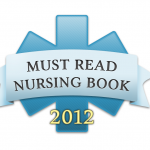

****
EM/ED resources for EM/ED providers
Welcome to EMresource.ORG. (ERpocketbooks.com has now become EMresource.org in order to reflect our added content). In addition to emergency medicine pocket reference books, we now boast many additional products as well as free educational content aimed primarily at ED and urgent care practitioners. Use the menu on the left or the hotlinks below to browse the site. To subscribe to the Emergency Medicine Case of the Month use the box on the right to enter your email address, then go to your inbox (or junk folder) to click the confirmation link.
- Free Emergency Medicine Ultrasound Library
- Free Educational Emergency Medicine Case Presentations
- Radiation Exposure in Diagnostic Imaging Chart
- Great Pocket Emergency Medicine Pocket Reference Books
- Other Pocket Emergency Medicine Products
contact us /subscribe/ view products
SUCK IT UP AMERICA
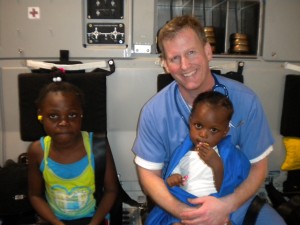 Emergency departments are distilleries that boil complex blends of trauma, stress and emotion down to the essence of immediacy: What needs to be done, right now, to fix the problem. Working the past 20 years in such environments has shown me with great clarity what is wrong (and right) with our nation’s medical system.
Emergency departments are distilleries that boil complex blends of trauma, stress and emotion down to the essence of immediacy: What needs to be done, right now, to fix the problem. Working the past 20 years in such environments has shown me with great clarity what is wrong (and right) with our nation’s medical system.
It’s obvious to me that despite all the furor and rancor, what is being debated in Washington currently is not health-care reform. It’s only health-care insurance reform. It addresses the undeniably important issues of who is going to pay and how, but completely misses the point of why.
Health care costs too much in our country because we deliver too much health care. We deliver too much because we demand too much. And we demand it for all the wrong reasons. We’re turning into a nation of anxious wimps.
I still love my job; very few things are as emotionally rewarding as relieving true pain and suffering, sharing compassionate care and actually saving lives. Illness and injury will always require the best efforts our medical system can provide. But emergency departments nationwide are being overwhelmed by the non-emergent, and doctors in general are asked to treat what doesn’t need treatment.
In a single night I had patients come in to our emergency department, most brought by ambulance, for the following complaints: I smoked marijuana and got dizzy; I got stung by a bee and it hurts; I got drunk and have a hangover; I sat out in the sun and got sunburn; I ate Mexican food and threw up; I picked my nose and it bled, but now it stopped; I just had sex and want to know if I’m pregnant.
Since all my colleagues and I have worked our shifts while suffering from worse symptoms than these (well, not the marijuana, I hope), we have understandably lost some of our natural empathy for such patients. When working with a cold, flu or headache, I often feel I am like one of those cute little animal signs in amusement parks that say “you must be taller than me to ride this ride” only mine should read “you must be sicker than me to come to our emergency department.” You’d be surprised how many patients wouldn’t qualify.
At a time when we have an unprecedented obsession with health (Dr. Oz, “The Doctors,” Oprah and a host of daytime talk shows make the smallest issues seem like apocalyptic pandemics) we have substandard national wellness. This is largely because the media focuses on the exotic and the sensational and ignores the mundane.
Our society has warped our perception of true risk. We are taught to fear vaccinations, mold, shark attacks, airplanes and breast implants when we really should worry about smoking, drug abuse, obesity, cars and basic hygiene. If you go by pharmaceutical advertisement budgets, our most critical health needs are to have sex and fall asleep.
Somehow we have developed an expectation that our health should always be perfect, and if it isn’t, there should be a pill to fix it. With every ache and sniffle we run to the doctor or purchase useless quackery such as the dietary supplement Airborne or homeopathic cures (to the tune of tens of billions of dollars a year). We demand unnecessary diagnostic testing, narcotics for bruises and sprains, antibiotics for our viruses. And due to time constraints on physicians, fear of lawsuits and the pressure to keep patients satisfied, we usually get them.
Yet the great secret of medicine is that almost everything we see will get better (or worse) no matter how we treat it. Usually better.
The human body is exquisitely talented at healing. If bodies didn’t heal by themselves, we’d be up the creek. Even in an intensive care unit, with our most advanced techniques applied, all we’re really doing is optimizing the conditions under which natural healing can occur. We give oxygen and fluids in the right proportions, raise or lower the blood pressure as needed and allow the natural healing mechanisms time to do their work. It’s as if you could put your car in the service garage, make sure you give it plenty of gas, oil and brake fluid and that transmission should fix itself in no time.
The bottom line is that most conditions are self-limited. This doesn’t mesh well with our immediate-gratification, instant-action society. But usually that bronchitis or back ache or poison ivy or stomach flu just needs time to get better. Take two aspirin and call me in the morning wasn’t your doctor being lazy in the middle of the night; it was sound medical practice. As a wise pediatrician colleague of mine once told me, “Our best medicines are Tincture of Time and Elixir of Neglect.” Taking drugs for things that go away on their own is rarely helpful and often harmful.
We’ve become a nation of hypochondriacs. Every sneeze is swine flu, every headache a tumor. And at great expense, we deliver fantastically prompt, thorough and largely unnecessary care.
There is tremendous financial pressure on physicians to keep patients happy. But unlike business, in medicine the customer isn’t always right. Sometimes a doctor needs to show tough love and deny patients the quick fix.
A good physician needs to have the guts to stand up to people and tell them that their baby gets ear infections because they smoke cigarettes. That it’s time to admit they are alcoholics. That they need to suck it up and deal with discomfort because narcotics will just make everything worse. That what’s really wrong with them is that they are just too damned fat. Unfortunately, this type of advice rarely leads to high patient satisfaction scores.
Modern medicine is a blessing which improves all our lives. But until we start educating the general populace about what really affects health and what a doctor is capable (and more importantly, incapable) of fixing, we will continue to waste a large portion of our health-care dollar on treatments which just don’t make any difference.
Posted with permission, Tom Doyle, MD (tomdoy@aol.com)
How to take your ED from Good to Great.
Would you be curious about what is going on in an ER that has Press Ganey scores in the 97th percentile and a waiting list of nurses to select from? Challenges arise in the operation of ERs every day and are met with varying degrees of effectiveness. The Secret Ingredients of the Ultimate ER takes you inside the minds of the nurses, administrators, physicians, clerks, and others who make up an extraordinary team. You will discover what highly effective leadership looks like; prepare to be surprised! You will discover the structures, processes, practices, and attitudes that enable a workplace to function powerfully and then be able to share them with your own workplace.
Price: $42.99 (includes shipping)
Chapters:
1. The Results Produced
2. In a Word
3. Motivation to Work at Wadley
4. What a Team Looks Like
5. Team’s Perspective on Being a Team
6. ER Director/Nurse Manager
7. ER Medical Director
8. Administration
9. Optimal ER Structure: From precedes Function
10. Documentation
WELCOME TO EMRESOURCE.ORG
“Emergency physicians need to always be looking for trouble. We also love it when we are wrong” – Brady Pregerson, MD
“It’s not our patient’s job to prove they are sick. It’s our job to prove they are not.” – Yaron Ivan, MD
EMresource.org is a free, no-registration, no log-in website designed for MD’s, RN’s and PA’s that work in the Emergency Department or Urgent Care settings. You can browse the site using the menu bar at the left (for each main page a second menu bar may be located on the right side of your screen).
- Test you skill: Take our monthly EM Case challenge. You can also subscribe
- Get visual: Browse our Ultrasound Image Library
- Fill your pocket: Visit our Store for pocket references & cards, CD’s and more
- Share: Tell your colleagues about our site and the Monthy Medical Mystery e-mail

